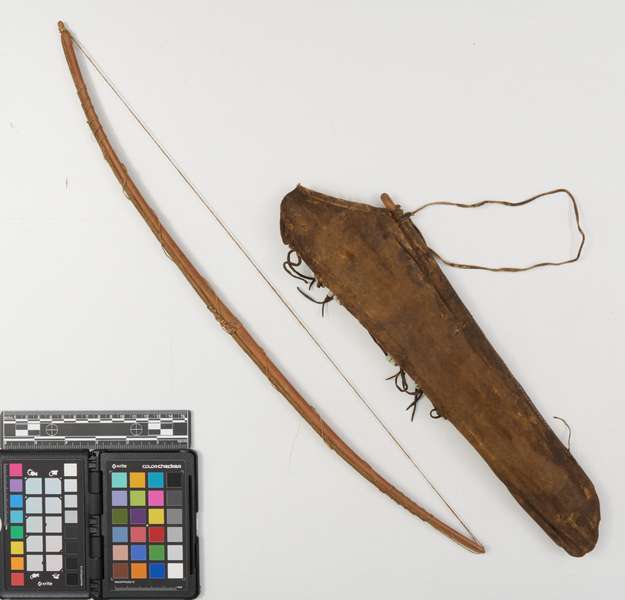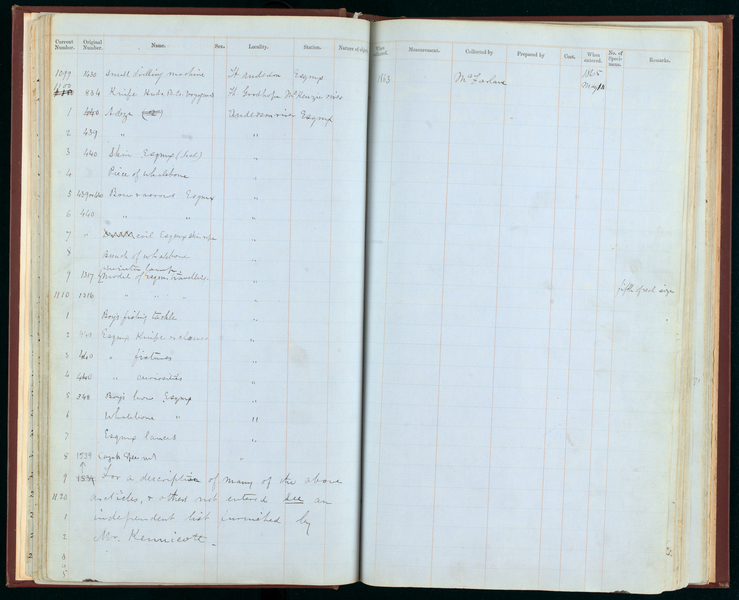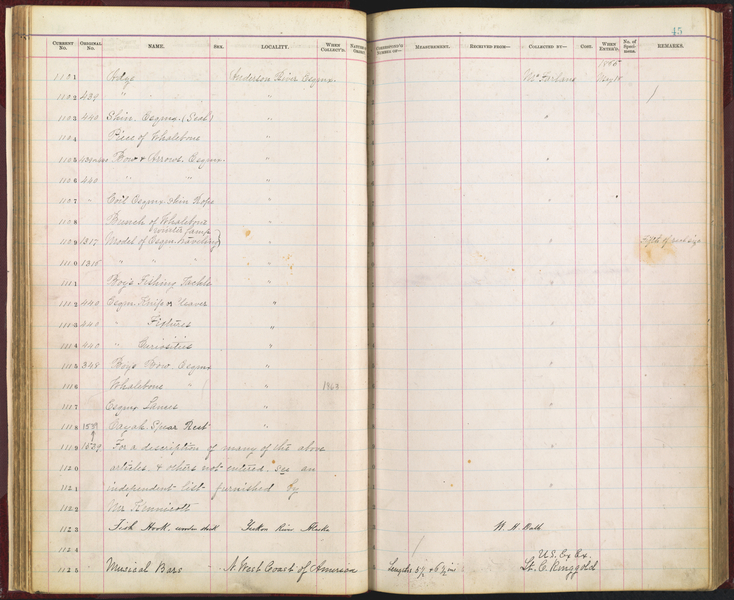Boy's Bow Item Number: E1115-0 from the National Museum of Natural History





Notes
Sinew cable-backed bow and quiver.Source of the information below: Inuvialuit Pitqusiit Inuuniarutait: Inuvialuit Living History, The MacFarlane Collection website, by the Inuvialuit Cultural Resource Centre (ICRC), Inuvik, N.W.T., Canada (website credits here http://www.inuvialuitlivinghistory.ca/posts/12 ), entry on this artifact http://www.inuvialuitlivinghistory.ca/items/23 , retrieved 12-17-2019: Bow. Small bow, part of a set that includes a quiver. This is identified on the Smithsonian Institution's catalogue as a 'boy's bow'. The stave is approximately 52 cm long, or half the size of a regular bow of this type. It is a somle bow, made from a single piece of wood, probably spruce. The bow stave is thickest in the middle and flattened at each end, where knob-like projections have been carved to hold a bowstring made of braided sinew. A long piece of braided sinew is laid lengthwise along the back of the bow, passing around the end projections and twisted together into two cables. The sinew backing is attached to the stave by a series of hitches, also made from sinew. More information here: http://www.inuvialuitlivinghistory.ca/item_types/9: Bows with sinew backing were one of the most sophisticated hunting weapons of the Inuvialuit. The bow stave was often made from a single piece of spruce somewhat more than a metre in length, with a continuous piece of braided sinew laid along the back of the stave in several strands that wrapped around each end. The sinew strands were attached to the stave near each end with a series of hitches, and between these hitches the strands were twisted into two tight cables. The sinew backing added strength and elasticity to the bow. There were two main types of these bows. Simple bows when strung curve in an arc from one end to another. They were often used when hunting small animals and birds. Recurve bows are constructed so that the centre of the strung bow curves towards the archer then bends away at each end. The recurve shape together with the sinew backing made this type of bow a powerful tool for hunting large animals. Bowstrings were made from braided sinew.Source of the information below: Inuvialuit Pitqusiit Inuuniarutait: Inuvialuit Living History, The MacFarlane Collection website, by the Inuvialuit Cultural Resource Centre (ICRC), Inuvik, N.W.T., Canada (website credits here http://www.inuvialuitlivinghistory.ca/posts/12 ), entry on this artifact http://www.inuvialuitlivinghistory.ca/items/313 , retrieved 12-17-2019: Quiver, part of a set that includes a bow, that is identified on the Smithsonian Institution's catalogue as a 'boy's bow'. The quiver is made from caribou hide. It has a sleeve with a wood rod inserted as a stiffener sewn along one side, and a carrying strap made from a hide thong is sewn onto that side. On the opposite side are a number of fringes, some of which are decoratedwith white beads. The opening for the arrows has been finished by folding it back and sewing it in place.
Item History
- Made in Northwest Territories, Canada
- Collected in Northwest Territories, Canada
- Received from Roderick R. MacFarlane on May 18, 1865
Who
- Culture
- Eskimo, Inuit and Inuvialuk
- Received from
- Roderick R. MacFarlane
Where
- Holding Institution
- National Museum of Natural History
- Made in
- Northwest Territories, Canada
- Collected in
- Northwest Territories, Canada
When
- Acquisition Date
- on May 18, 1865
Other
- Accession Number
- 65A00065